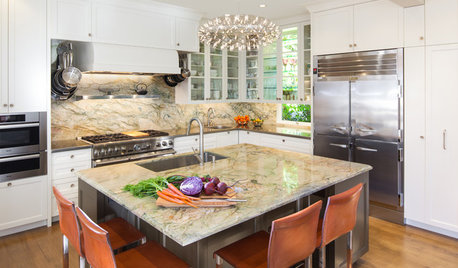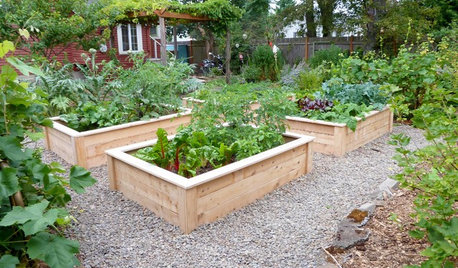Figuring out this gardening thing...need serious help
teapot100
10 years ago
Related Stories

Figure Out Your Art Style
Bemoaning bare walls but flummoxed by all the choices for art? Here's help deciding on a style
Full Story
KITCHEN DESIGNKitchen of the Week: Elegant Updates for a Serious Cook
High-end appliances and finishes, and a more open layout, give a home chef in California everything she needs
Full Story
DECORATING GUIDESHelp Out: Art and Design for Japan
Home Design That Benefits Relief Efforts
Full Story
GARDENING GUIDES12 Tips to Help You Start an Edible Garden
Get on your way to growing your own vegetables with a raised bed or a few containers on the patio
Full Story
WINTER GARDENINGHow to Help Your Trees Weather a Storm
Seeing trees safely through winter storms means choosing the right species, siting them carefully and paying attention during the tempests
Full Story
MOVINGRelocating Help: 8 Tips for a Happier Long-Distance Move
Trash bags, houseplants and a good cry all have their role when it comes to this major life change
Full Story
LIFE12 House-Hunting Tips to Help You Make the Right Choice
Stay organized and focused on your quest for a new home, to make the search easier and avoid surprises later
Full Story
LIFEYou Said It: ‘Put It Back’ If It Won’t Help Your House, and More Wisdom
Highlights from the week include stopping clutter from getting past the door, fall planting ideas and a grandfather’s gift of love
Full Story
HOUSEKEEPINGWhen You Need Real Housekeeping Help
Which is scarier, Lifetime's 'Devious Maids' show or that area behind the toilet? If the toilet wins, you'll need these tips
Full Story
DECLUTTERINGDownsizing Help: How to Edit Your Belongings
Learn what to take and what to toss if you're moving to a smaller home
Full StorySponsored
More Discussions







wispfox
cathie3078
Related Professionals
Danbury Landscape Architects & Landscape Designers · Deer Park Landscape Architects & Landscape Designers · Roxbury Crossing Landscape Architects & Landscape Designers · Middletown Landscape Contractors · Belvedere Park Landscape Contractors · Bridgeport Landscape Contractors · Nashua Landscape Contractors · Suitland Landscape Contractors · University City Landscape Contractors · Bensenville Landscape Contractors · Boston Decks, Patios & Outdoor Enclosures · Hialeah Decks, Patios & Outdoor Enclosures · Honolulu Decks, Patios & Outdoor Enclosures · Layton Decks, Patios & Outdoor Enclosures · Midwest City Decks, Patios & Outdoor Enclosuresmayalena